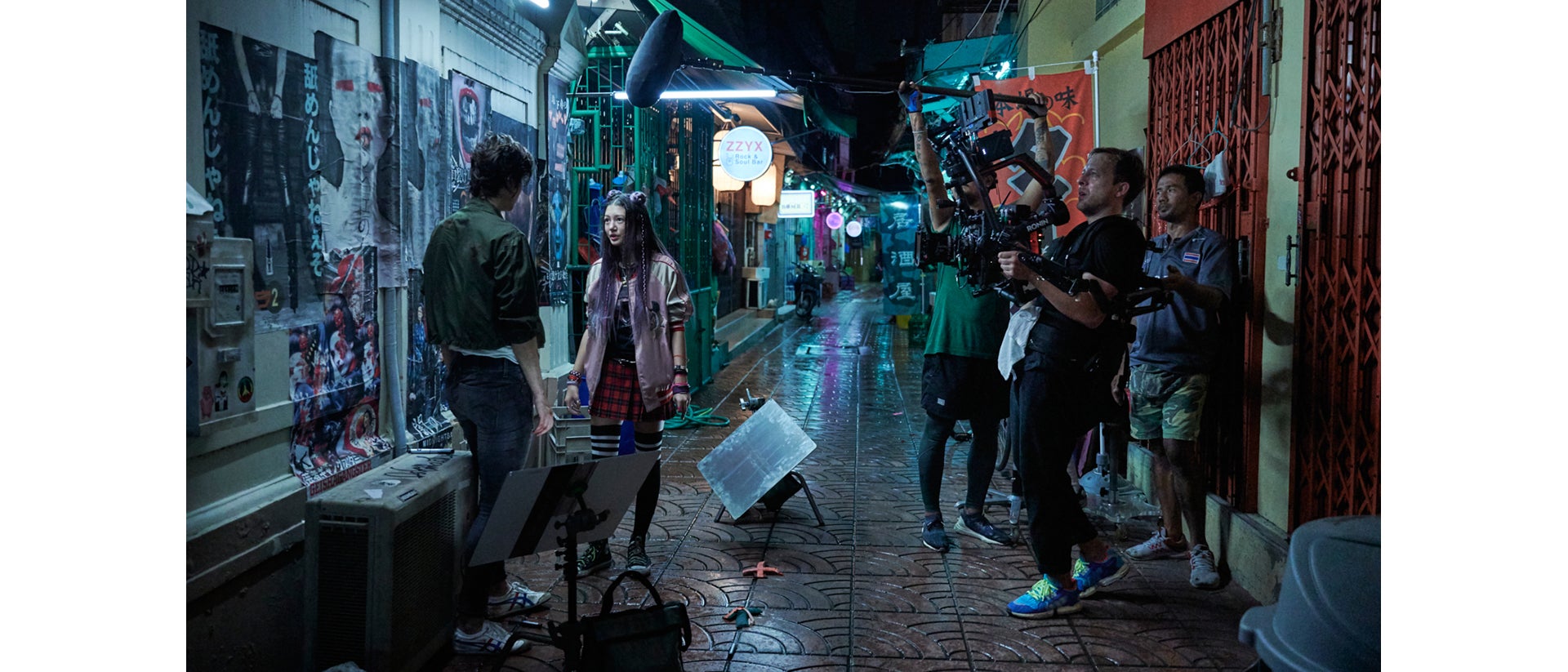
10-27-2021 - Case Study, Gear, Technology
VENICE Frames Stylish Netflix Action Thriller on “Kate” - Shot on Sony
By: David Heuring
Kate is a new Netflix thriller starring Mary Elizabeth Winstead, who plays a cold-blooded assassin poisoned during her final mission, leaving her 24 hours to seek revenge. Woody Harrelson plays her mentor and handler.
Director Cedric Nicolas-Troyen and director of photography Lyle Vincent designed the project’s visuals around distinctively saturated mixed-temperature color photographs of Tokyo nightscapes. For composition and blocking, they took cues from Sergio Leone Westerns.
The shoot was mostly done in Bangkok, which stood in for Tokyo, except for a week of exteriors done in the Japanese capital. A few key scenes were done in Los Angeles, including a final shootout that required slow-motion and other effects. Throughout the far-flung shoot, the sensitivity of the Sony VENICE played a crucial part in accomplishing the look.
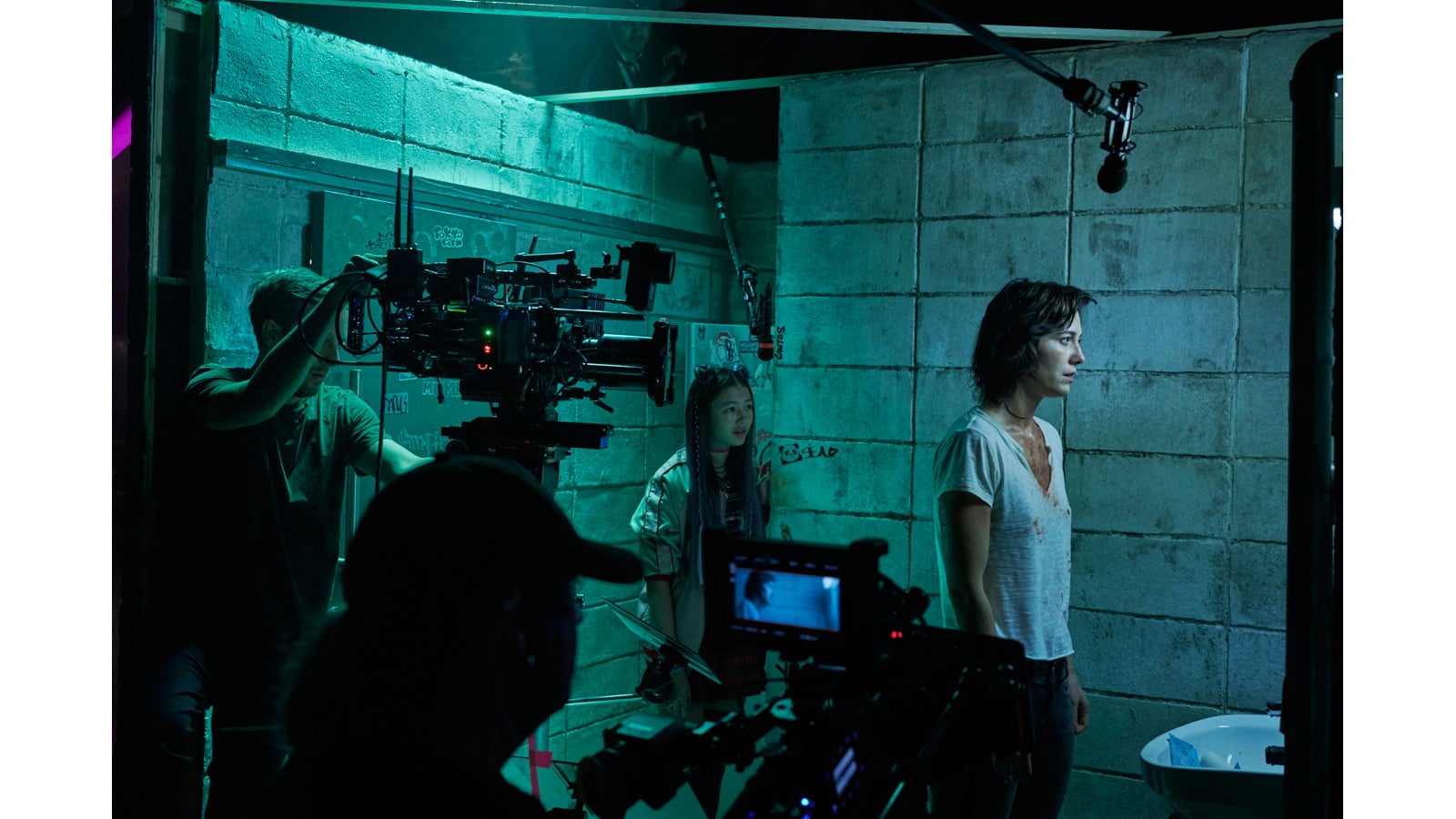
Vincent’s credits include the Sundance hit Thoroughbreds, the action film Bushwick, the indie project Dreamland, the cult horror film Daniel Isn’t Real, and two films with Ana Lily Amirpour: the highly praised A Girl Walks Home Alone at Night, and The Bad Batch, which won the 2016 VENICE Film Festival Special Jury Prize.
Regarding Kate, Vincent says, “We often used available ambient light. In an important rooftop scene in Bangkok, I had one little light far away just to edge her out on the skyline, but the camera was basically picking up everything from available light. When we had the opportunity to build sets, we always built mixed-color sources into the environments. We shot mostly at 2500 ISO and sometimes pushed it to 5000 or even 10,000. That was just amazing, pushing all the way and picking up all the little details.”
Vincent says that given the shooting schedule and the low-light strengths of the VENICE, the filmmakers never seriously considered another camera. They were also immediately in agreement regarding the format.
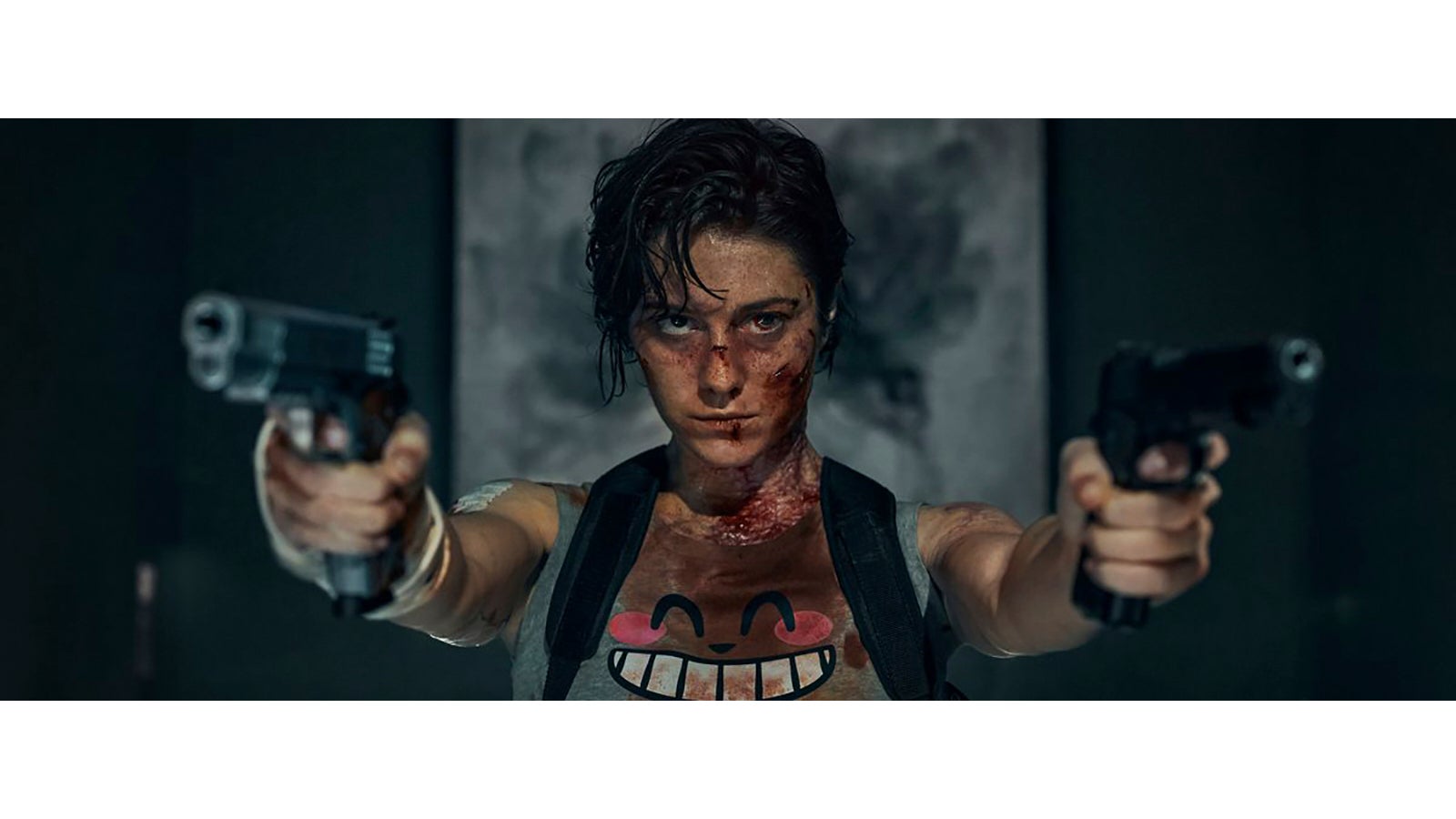
“I wouldn’t normally think of anamorphic format for available light at night because it can be a bit slower – sometimes two stops,” says Vincent. “But given the great ISO, we could pull off the anamorphic at night, which I think really gives the movie a very interesting and distinctive look, hearkening back to widescreen Westerns and samurai films.”
Rendering the lurid neon colors of Tokyo at night was a major consideration, but secondary to skin tone reproduction in Vincent’s mind.
“How skin tones are reading, and how the eyes are reading, are the most important things for me,” he says. “That’s how you connect with the characters and the story, so it’s something I really hone in on. And something I’ve always loved about the VENICE is the color rendition. I feel that the colors are very well separated, even in low light, whereas with many cameras, in low light situations, the colors seem to muddy out and blend together.
“Here, especially in the warmer skin tones, the reds are very well separated and pleasant,” he says. “I’m a lover of film and photochemical finish, and so is my colorist, Tom Poole. We have found that the VENICE has a very filmic look. We’re never trying to push out of the film world, and we’re always concentrating on skin tones.”
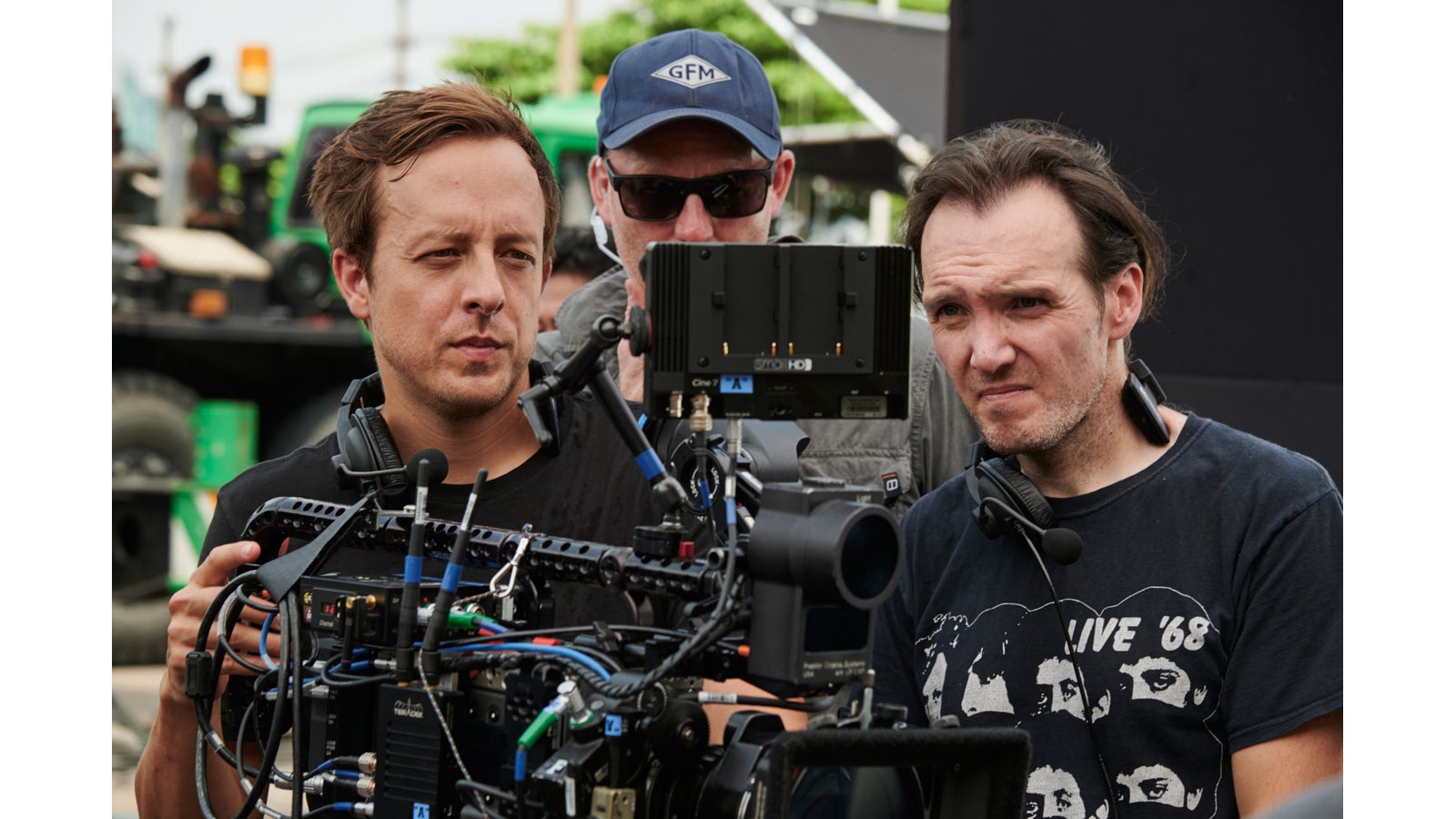
Super-saturated neon light plays in many scenes, requiring Vincent to maintain a delicate balance. “We really wanted to highlight those mixed colors and color temperatures in this movie,” says Vincent, “but not to the point where it feels artificial or fake, like just colored lights everywhere. That’s another reason we tried to keep the light inside the environment, where the audience can see the motivation and the direction. The camera and its color rendition definitely helped us with that.”
The lenses were T Series anamorphics from Panavision, chosen for their combination of sharpness, contrast and fall-off. Vincent added Black Magic filters to most shots, with the degree depending on the scene and focal length. He usually shot wide open or close to it. The 60mm was a go-to focal length that allowed the camera to get close to the actors for additional intimacy.
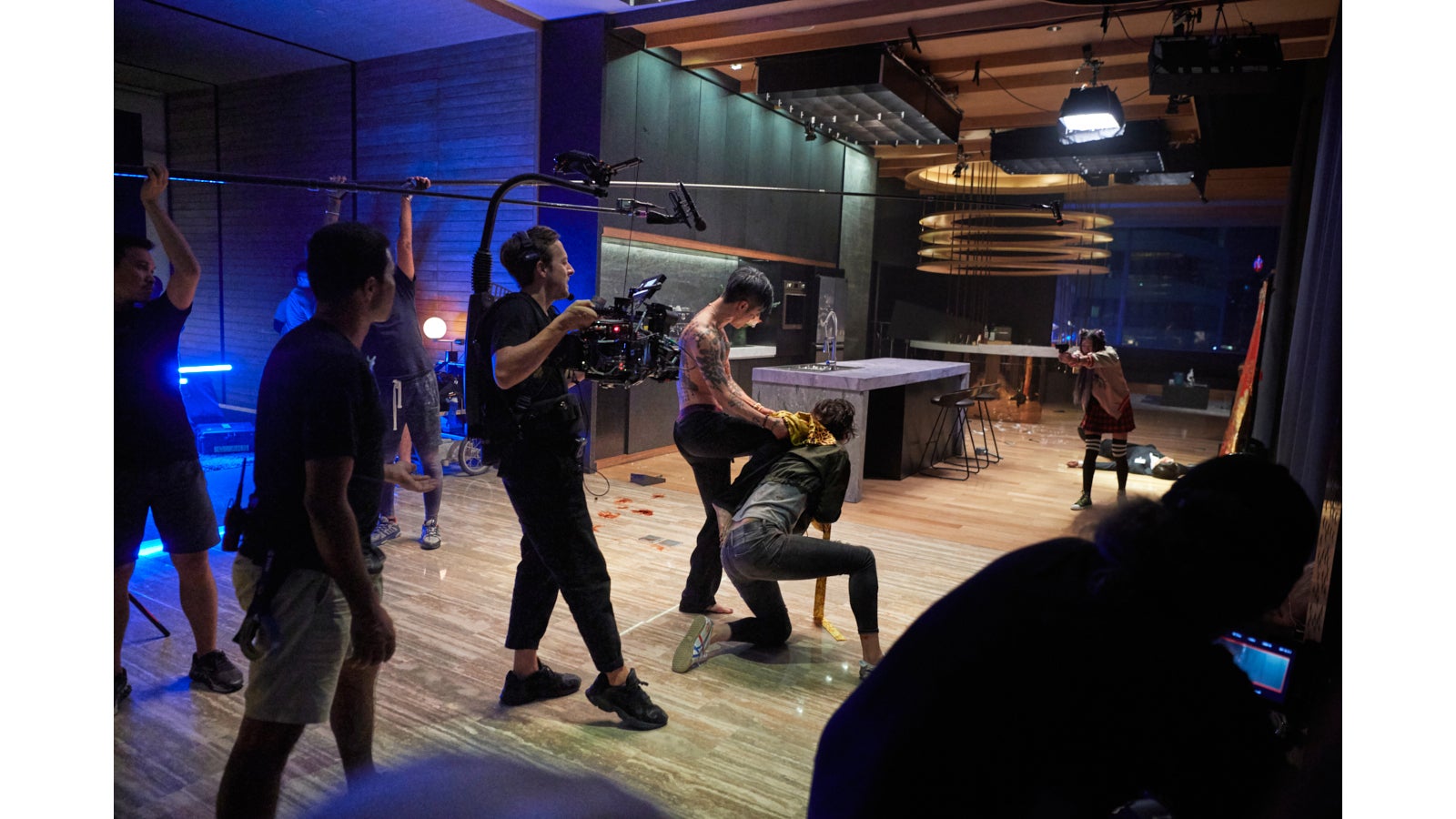
“The T Series are kind of in-between,” Vincent explains. “They have just enough character and aberration to keep it organic. The filtration blooms the highlights and helps maintain that filmic look. I always like to feel the environment that the character is in, to sense their relationship to it and to give the scene a three-dimensionality. The background is not tack-sharp, but the fall-off is still there, so it feels sculpted, and not just a blur like you sometimes see on larger format with fast lenses.”
Several more complicated and choreographed scenes involving CG called for extensive pre-visualization, including the big shootout scene and a particularly hair-raising car chase sequence that was done partly with 2D LED in-camera VFX. The project was one of the first in Thailand to use the LED technique.
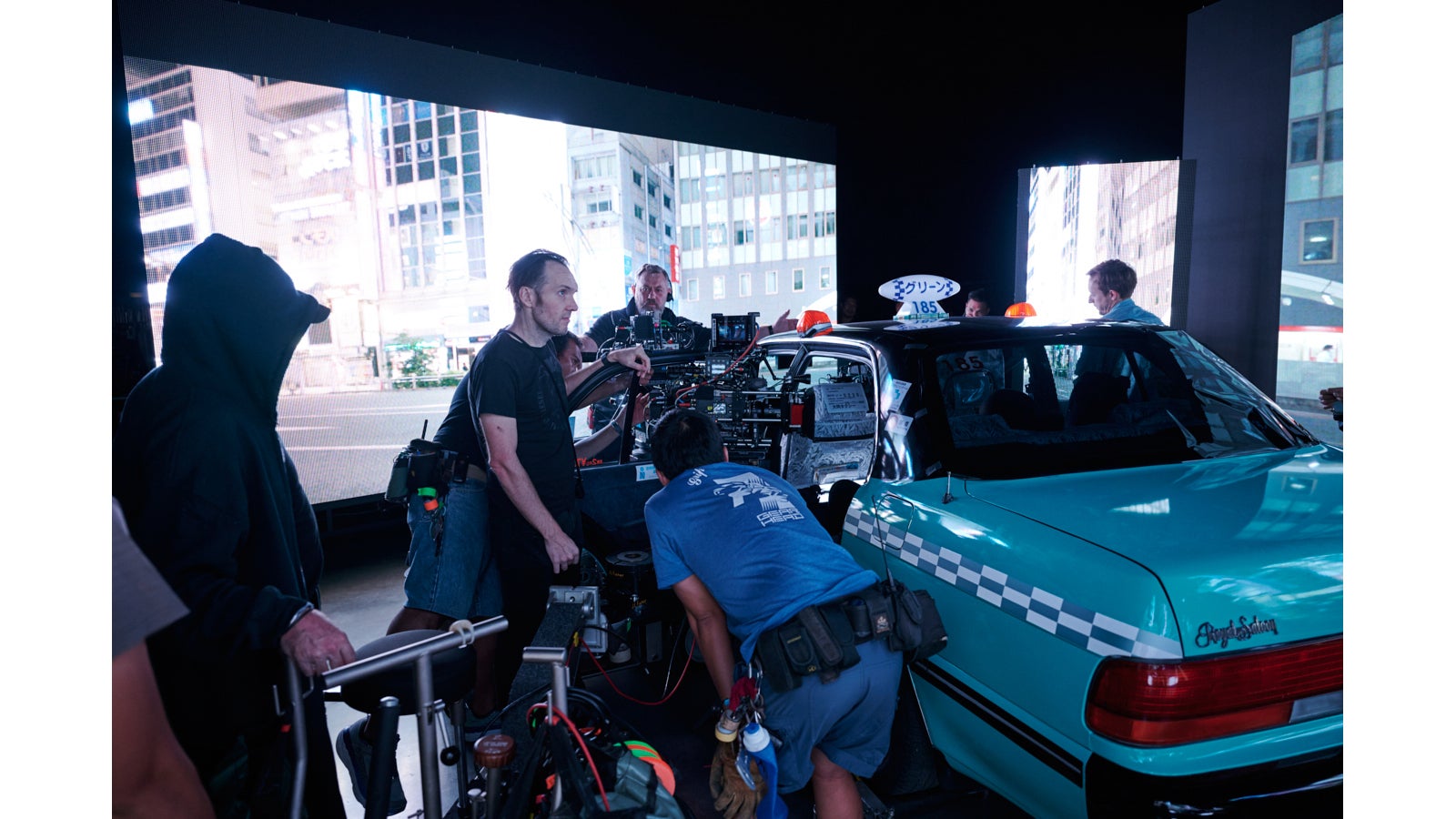
“It was the first time I’d done it, and it was very new,” says Vincent. “We had to make it all seamless and make all these various locations look like Tokyo. In the US, there are companies that set it up for you. But over there, no one had done it. So we did a lot of research and testing on every aspect, starting with getting the right LED screens, with the right size, brightness and placement, and the right pixel pitch to avoid moiré.
“We shot our own plates, and the huge advantage to that is the lighting,” he says. “Unlike with green screen, the LED plates light the actor’s face and it becomes interactive, and that’s what really sells it. The sensitivity of the VENICE was a major benefit there as well. In some cases, the shot looked best with the LEDs barely on. If you walked into that set, you could hardly see it with your own eyes. And to be able to shoot with anamorphic lenses in that environment was fantastic.”
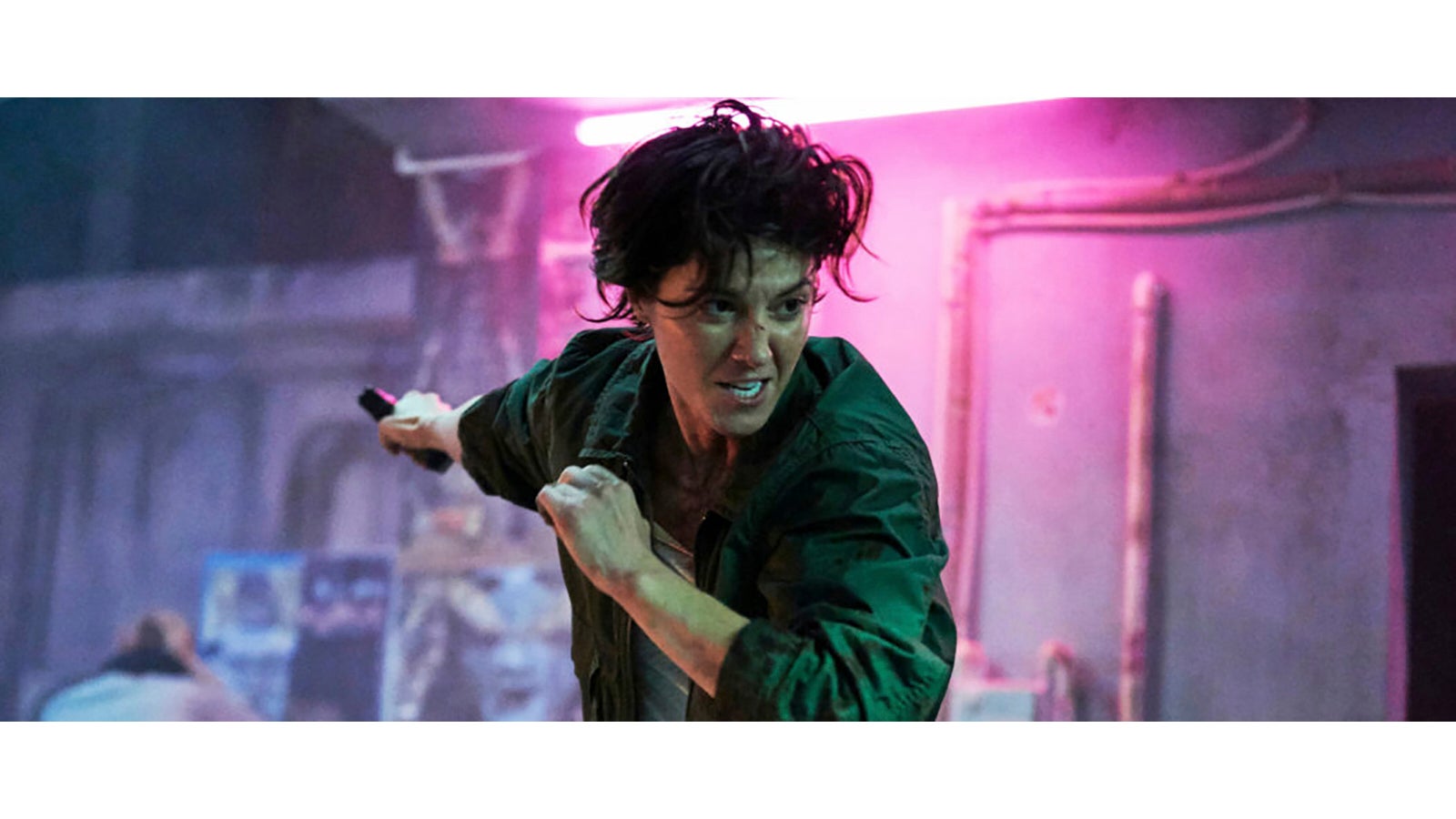
The grade was done with Poole at Company 3, and a separate HDR version was produced that Vincent describes as impressive.
“The way we work involves keeping it in the film world on our first pass, and making a very good Rec709 that we love,” says Vincent. “For the HDR, we sort of sweeten that. We don’t push to the maximum of what it can do. That can be too much, and it starts getting too far away from film and starts becoming something else. But you get a little bit of extra detail. The highlights are a little bit brighter and the shadows and the colors are that much more rich. The separation is better, and it just becomes a little more immersive, which I appreciate.”
Kate debuted on Netflix on September 10, 2021. Richard Roeper of the Chicago Sun-Times opined that the film delivers “a grindhouse of a good time with some bleak and wickedly sharp humor, screen-popping visuals and some pretty great fight choreography.”




